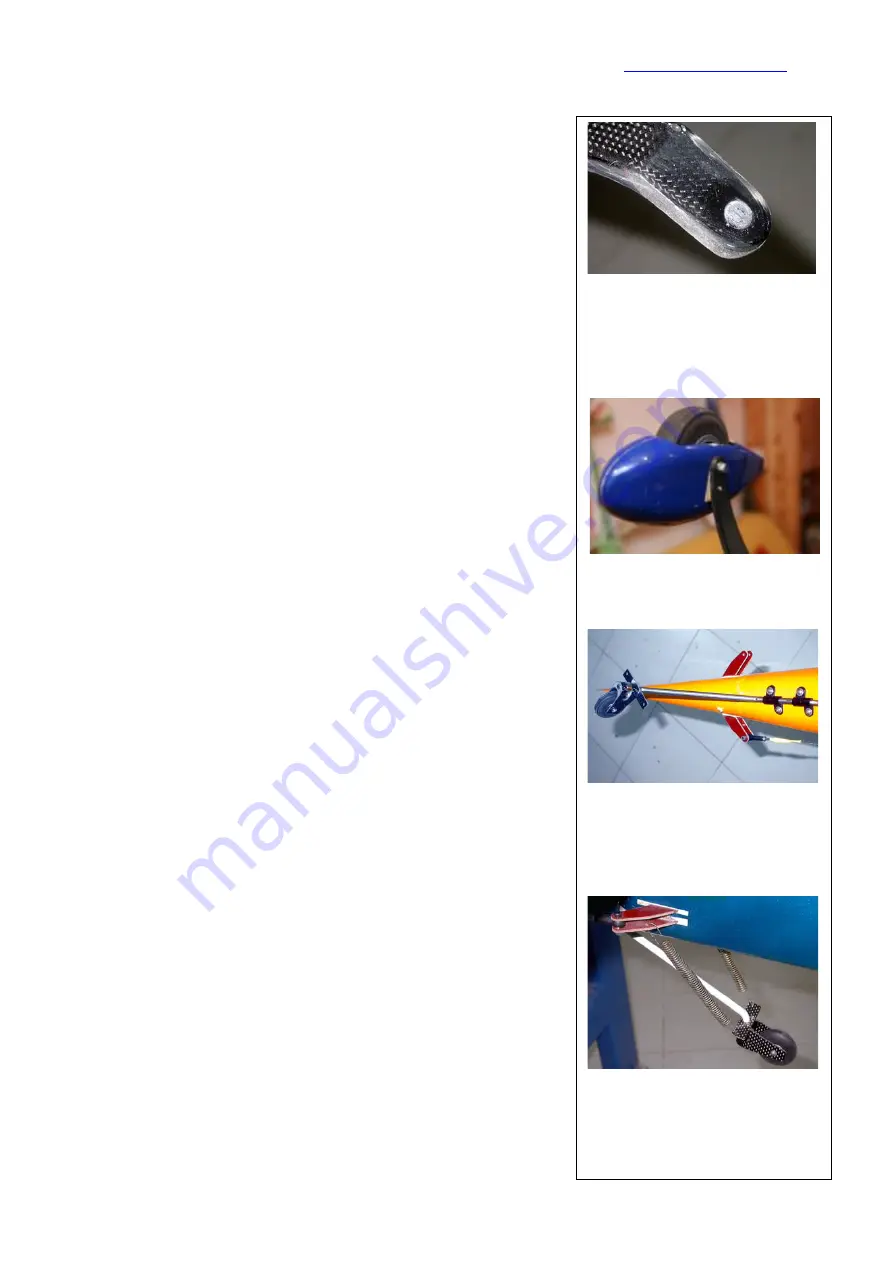
CARF-Models Extra 330SC (3.1m)
www.carf-models.com
8
Landing Gear
The 1st job is to fit the landing gear legs (wheel pants and
cuffs can be done later) - and you can leave these in place to
protect the bottom of the fuselage during assembly. The
CARF landing gear for the Extra consists of 45 deg
laminated carbon fibre cloth and a huge number of
carbon
rovings inside, all made under vacuum and heat cured.
However it is still light weight, and retains enough flexibility to
take the shock out of any landings that are lessthan-perfect!
Drill out the molded dimples in the carbon legs to a hole of
6mm dia.
Both main legs are identical, and can be used
either side. The carbon landing gear legs are secured to the
revised aircraft-grade plywood supports and bulkheads in the
fuselage (factory-installed), using the supplied
M6 x 20mm
bolts and washers into the pre-installed T-nuts.
The wheelpants have a moulded-in recess for the end of the
landing gear legs. Drill an 8mm Ø hole through the moulded-
in ‘dimple’ for the axle, and another 8mm hole directly
opposite, on the outside surface of the wheelpant for
inserting the axle bolt. Prepare the inner surface of the
wheelpants. Take the 2 milled plywood ‘U’ shaped pieces
and enlarge the 6mm Ø holes to 8mm diameter. Press the
M6 T-nuts into the holes, just far enough so that the end of
the T-nut projects through the hole a maximum of 1mm. The
‘spikes’ still engage in the plywood, and the gap between the
T-nut and the plywood is filled with epoxy and microballoons
mixture later.
Glue the 2 ‘U’ shaped milled plywood pieces to the inside
surface of the wheelpants with 30 minute epoxy and
microballoons mixture, over the kevlar reinforcement, in line
with the moulded recess, and so that the hole in the plywood
is exactly lined up with the 8mm hole you have drilled in the
wheelpant. Temporarily use the axle bolts and nuts to secure
while the glue dries. At the same time secure the T-nut to the
plywood with some of the thick epoxy/micro mixture, as
shown in the photo.
Drill 6mm Ø through the centre of the moulded dimples in the
bottom of the carbon legs (photo above), and bolt to the
wheelpants temporarily with the axle bolt. Drill a 3mm hole
thru’ the carbon leg and wheelpant, approx. 25mm above the
axle. Fit an M3 bolt and washer, and use an M3 T-nut inside
- also secured to the plywood ‘U’ shape with epoxy/micro
mixture. This bolt sets the precise angle of the wheelpant to
the carbon landing gear leg. Do not use a bolt of larger
diameter, as the larger hole required could weaken the leg.
Install your chosen wheels (eg: Dubro 5”), inserting the M6 x
70mm hardened steel axle bolt through the hole you drilled
The moulded dimple in the
bottom of the carbon legs. Drill
a central hole of 6mm diameter.
The wheepants
Our titan tailwheel is an
optional part available from
CARF.
Connect the steering arm to the
rudder horns with springs for
steering option if required.









































